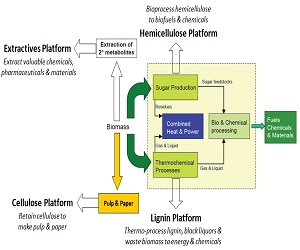
Lew P Christopher
Lakehead University, Canada
Title: Growing a high-value bioeconomy through biofuels and bioenergy production from low-value biomass waste
Biography
Biography: Lew P Christopher
Abstract
Biorefineries are our future oil refineries where oil is inevitably replaced by lignocellulosic biomass; the most abundant and renewable resource on earth that is reproduced at 60 billion tons a year. Biorefineries are viewed as one of the major economic pillars of the emerging global bioeconomy that can advance and accelerate our transition to a bio-based society. Major drivers of the transitioning process include increasing demand for food and energy, diminished oil reserves and unstable oil prices, and increasing concerns over global climate change and greenhouse gas emissions. Currently, however, less than 10% of the total global fuels and chemicals production is derived from biomass. This is mainly due to the fact that biofuels and biochemicals are not yet cost-competitive to their petroleum-based counterparts. The current cost of lignocellulose conversion to bioenergy (US $15-$25/GJ) exceeds the cost of fossil fuels (US $3.31-$17.37/GJ). Therefore, development of an economically-viable production system would require the use of low-value biomass and waste streams that are currently generated. As the feedstock costs comprise about 50% on average of the total production costs, it has now been recognized that biomass waste can provide a cost-effective alternative to improve the economic viability of the biorefineries. Utilization of low-cost or negative-cost biomass waste has at least two major advantages over any other lignocellulosic feedstock: Opportunity to significantly lower the overall production costs of targeted bioproducts (biofuels, biochemicals or biomaterials) and opportunity to significantly reduce waste treatment costs and carbon footprint. This presentation will discuss opportunities for valorization of waste streams and underutilized byproducts generated during processing of lignocellulosic biomass. Waste streams under consideration conclude municipal solid waste, agricultural residues, bark, sawdust, primary and secondary sludge, industrial hydrolysates, etc. Potential value-added bioproducts and related technological challenges will be critically reviewed.


